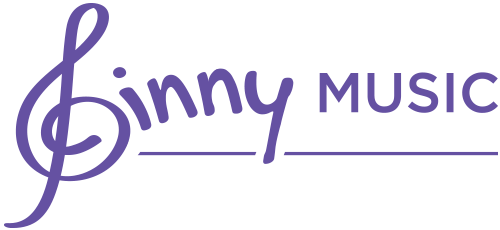

When I first started teaching guitar classes, I noticed that many chord-based methods began with G, C, and D. I get it—those three chords can open the door to countless songs! But from an educational standpoint, this is not the most effective approach.
My 30 years of experience teaching both private and classroom music, along with my training in the Kodály Method, have shown me the value of carefully scaffolding and sequencing to lead to deeper understanding and mastery.
Simple: E Minor as the First Step
When I teach rhythm guitar (which I reserve for teens and adults; younger children start with the ukulele), I begin with the E minor chord. It’s the simplest: only two left-hand fingers are needed (fingers 2 and 3 for now), and you can strum all the strings. It’s a clear winner!
From there, I introduce E major. By simply adding the pointer finger on the third string, students now know two chords! This is the perfect opportunity to start an ear training journey and a fascinating discussion about major vs. minor chords—often a new concept for beginners.
Next Step: A Minor and Building Efficient Movements
What comes next? A minor. You can see why: E major and A minor share the exact same hand shape; the only difference is moving down a string. This is the perfect time to talk about moving fingers as a unit (efficient movement) versus one finger at a time (inefficient movement). With a little practice, students can quickly and easily switch between these three chords.
The Benefits of E Minor, E Major, and A Minor
Why use this combination? For one, it introduces students to the number system in the key of A minor: A = 1 and E = 5. This makes much more sense than starting with the key of G, where the number system can be more confusing.
With just these three chords (Em, E, and Am), students can start playing simple one-chord and two-chord songs. They also begin to see how E major and E minor are related, laying a solid foundation for understanding musical relationships in the future.
Keeping It Simple to Focus on Rhythm
By simplifying the left hand, students have the mental space to focus on maintaining a steady beat with their strumming hand. Some students find this easy, while others struggle. That’s okay—everyone learns at their own pace.
I sometimes introduce A major in the first session, but lately, I’ve been slowing down and allowing more time for mastery. Whenever I introduce it, I show the parallels between Em/E and Am/A, both on the fretboard and aurally.
Moving On: D Major and Expanding the Repertoire
Next, I teach the D major chord. Now we have the 1, 4, and 5 chords in the key of A (A, D, and E), which allows students to play hundreds of songs. This also sets the stage for teaching transposition later on. The number system continues to make sense: A = 1, D = 4, E = 5. Life is good, and playing guitar becomes a lot more fun!
At this point, I introduce chord charts using both letters and the number system. Learning the numbers from the start, first in the key of A, will significantly benefit their musical journey.
Introducing String Skipping and Muting with the D Chord
I wait to introduce string skipping or muting until I teach the D chord. Here, I explain that a chord sounds best when its root (now is a great time to introduce this term) is the lowest pitch. While I don’t make a big deal about strumming the low E string for an A chord—it happens, and it often sounds fine—I do demonstrate how unpleasant the open E string sounds in a D chord. That’s something we want to avoid! When we evenually cover fingerstyle patterns, I explain which strings to avoid and why.
The Importance of a Sequential Approach
This method engages students in learning about music, not just memorizing chord shapes—although that’s certainly part of it. My goal is to help people become competent musicians who understand not just "what" to play, but also "why" and "how" to play it.



